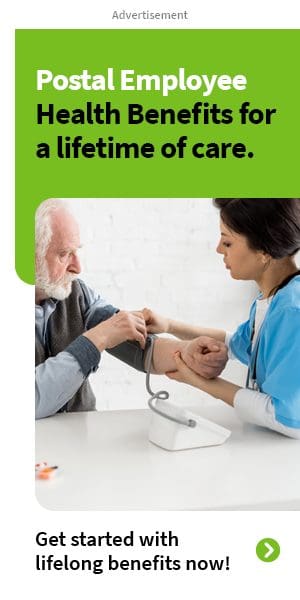Key Takeaways
-
Certain Medicare-eligible PSHB enrollees are required to enroll in Medicare Part B in 2025 to maintain their PSHB coverage, with clearly defined exceptions.
-
Failing to enroll in Medicare Part B when required can result in loss of PSHB medical and prescription drug coverage, along with potential late penalties.
Understanding the Medicare Requirement for PSHB
As of January 1, 2025, the Postal Service Health Benefits (PSHB) Program replaces FEHB coverage for USPS employees, retirees, and eligible family members. One of the most important rules that has come into effect with this transition involves mandatory Medicare enrollment for certain annuitants and their family members.
This requirement is tied specifically to Medicare Part B, which covers outpatient services like doctor visits, diagnostic tests, and preventive care. Understanding who is subject to this rule, who is exempt, and what happens if you don’t comply is crucial for maintaining uninterrupted health benefits.
Who Is Required to Enroll in Medicare Part B?
The new Medicare enrollment mandate applies only to specific categories of annuitants and eligible family members. You are required to enroll in Medicare Part B if all of the following are true:
-
You are entitled to Medicare Part A (typically premium-free based on work history).
-
You are enrolled in a PSHB plan as a Postal Service annuitant or family member.
-
You retired after January 1, 2025, or are a covered family member of someone who retired after that date.
-
You are 65 or older, or turning 65 during or after 2025.
This rule also applies if you become entitled to Medicare due to disability and meet the above criteria.
Key Exceptions
You are not required to enroll in Medicare Part B if:
-
You retired on or before January 1, 2025.
-
You are a family member of someone who retired on or before that date.
-
You were aged 64 or older as of January 1, 2025.
-
You live outside the United States in a location where Medicare does not operate.
-
You are eligible for Indian Health Service or VA health coverage.
Although you may still enroll in Medicare Part B voluntarily, your PSHB coverage will continue without interruption if you fall into any of these exemption categories.
Why the Rule Exists
The Medicare enrollment requirement is part of a broader cost-saving and risk management strategy by the U.S. Postal Service and Office of Personnel Management. By ensuring that Medicare pays first (as the primary payer) and PSHB plans pay second, the system reduces overall healthcare costs for both the Postal Service and the enrollee.
This coordination of benefits helps:
-
Lower total claim costs
-
Reduce PSHB premium increases
-
Provide broader access to healthcare services for Medicare enrollees
What Happens If You Don’t Enroll in Medicare Part B When Required?
Failing to enroll in Medicare Part B when required has serious consequences under PSHB rules. If you miss your opportunity to enroll and don’t qualify for an exception, the following can happen:
-
You will lose your PSHB medical coverage.
-
You will lose your PSHB prescription drug coverage.
-
You may incur Medicare late enrollment penalties, permanently raising your Part B premium.
The loss of both medical and pharmacy benefits can create significant out-of-pocket healthcare costs, especially for chronic conditions or hospitalizations.
Loss of Prescription Drug Coverage
All Medicare-eligible PSHB annuitants and family members who enroll in Medicare Part B will automatically receive prescription drug coverage through a Medicare Part D Employer Group Waiver Plan (EGWP). If you are required to enroll in Part B and don’t, you also forfeit this integrated drug benefit.
This loss means you won’t have access to:
-
The $2,000 out-of-pocket cap for Part D in 2025
-
Reduced copays on high-cost medications
-
The $35 monthly insulin cap
Timeline to Comply with Enrollment
If you are approaching Medicare eligibility and subject to the PSHB Part B requirement, the following timeline applies:
-
Initial Enrollment Period (IEP): Begins 3 months before your 65th birthday and ends 3 months after (a 7-month window).
-
Special Enrollment Period (SEP): If you missed IEP but qualify for a SEP due to PSHB transition, you may enroll without a penalty.
In 2024, a Special Enrollment Period ran from April 1 to September 30, 2024 for eligible annuitants and family members. If you did not act during that time and are now required to have Medicare Part B, you must use your IEP or General Enrollment Period (GEP) to comply.
-
General Enrollment Period (GEP): Runs annually from January 1 to March 31; coverage begins July 1 and may involve late penalties.
Coordination of Benefits with Medicare and PSHB
When you are enrolled in both Medicare and a PSHB plan, Medicare becomes the primary payer and PSHB becomes secondary. This can provide robust coverage with lower out-of-pocket costs.
Here’s how coordination works:
-
Medicare pays first for covered services.
-
PSHB pays second, often covering copayments, deductibles, and services Medicare does not fully reimburse.
-
Some PSHB plans offer Part B premium reimbursement or reduce cost-sharing when you are enrolled in Medicare.
This setup is especially beneficial for hospital stays, doctor visits, and specialist care where Medicare may cover 80% and your PSHB plan covers the rest.
How to Enroll in Medicare Part B
If you are required to enroll in Medicare Part B due to PSHB rules, here are the steps:
-
Check your eligibility: Use the Social Security Administration’s tools or contact a local SSA office.
-
Apply online: Visit the SSA website to apply during your enrollment window.
-
Use a licensed agent: Get personalized help reviewing your situation.
You’ll need to provide identifying documents and possibly proof of previous coverage if applying during a Special Enrollment Period.
What If You Already Have Medicare Part A Only?
Many Postal retirees already have Medicare Part A, since it’s typically premium-free. But having Part A alone does not satisfy the PSHB requirement. If you’re subject to the rule, you must also enroll in Part B to keep your PSHB benefits active.
If you mistakenly assumed Part A was sufficient and failed to enroll in Part B, contact a licensed agent immediately to explore any available enrollment windows.
How PSHB Handles Medicare-Ineligible Individuals
If you are truly not eligible for Medicare due to insufficient work credits or other reasons, you are not required to enroll in Medicare Part B. In this case, PSHB plans will continue to provide full benefits without interruption.
To confirm exemption, you may need to provide documentation, such as a denial letter from SSA, to your PSHB plan administrator.
Annual Notifications and Reminders
If you are approaching Medicare eligibility while enrolled in PSHB, you can expect multiple communications:
-
Annual Notice of Change (ANOC): Outlines how your plan is changing.
-
Medicare Eligibility Letters: Notifying you of your upcoming requirement to enroll in Part B.
-
PSHB Plan Materials: Including coordination of benefits and drug coverage rules.
Always review these notices closely and take action early to avoid disruptions.
Why You Should Act Early
Enrolling on time can help you:
-
Avoid costly penalties
-
Retain full PSHB benefits
-
Coordinate coverage for better financial protection
Failing to plan ahead could leave you uninsured for weeks or months, particularly if you rely on medications or have chronic medical needs.
What to Do If You’re Unsure
If you don’t know whether you’re required to enroll in Medicare Part B, or if you’re confused about timelines, coverage coordination, or plan documents, seek help. This is not something to guess about. Missing a deadline can have permanent consequences.
Ensure You Stay Covered with the Right Medicare Enrollment
Medicare enrollment is not optional for many PSHB participants—it’s a compliance issue that directly affects your access to medical and drug coverage. With 2025 underway, these rules are fully active. If you’re unsure where you stand, the safest move is to contact a licensed agent listed on this website. They can help you determine whether you’re subject to the requirement, whether you qualify for an exception, and how to enroll correctly.
Take action early and stay informed—your health coverage depends on it.






